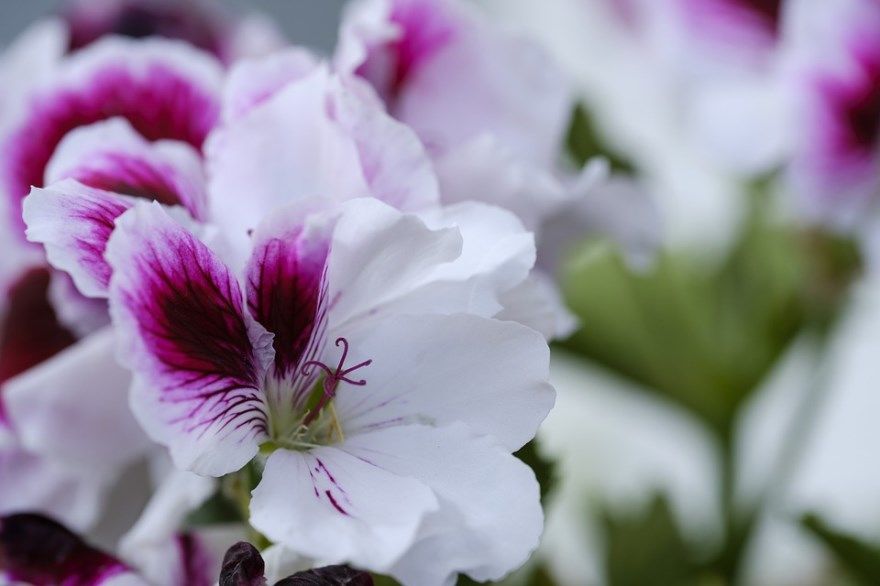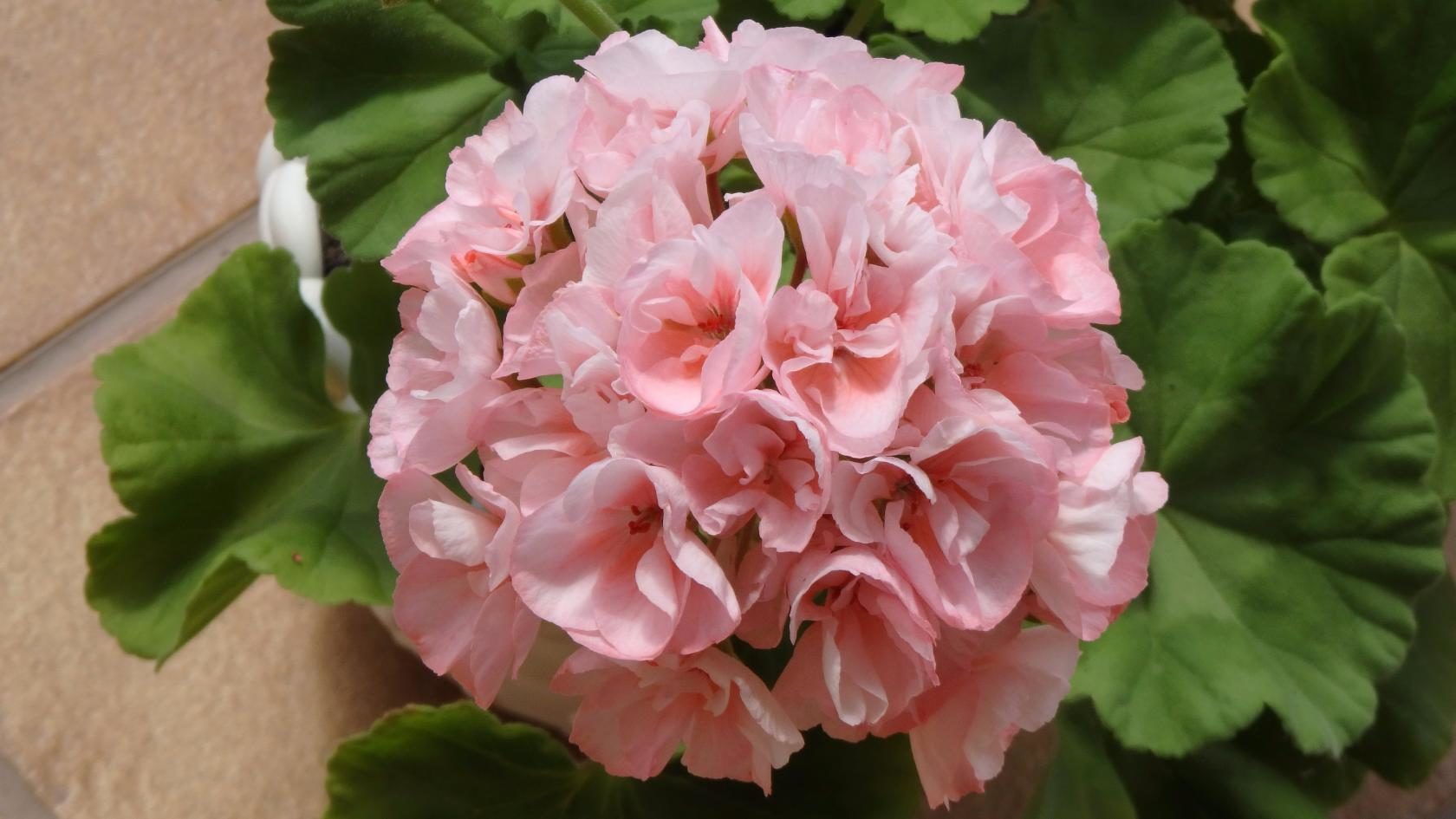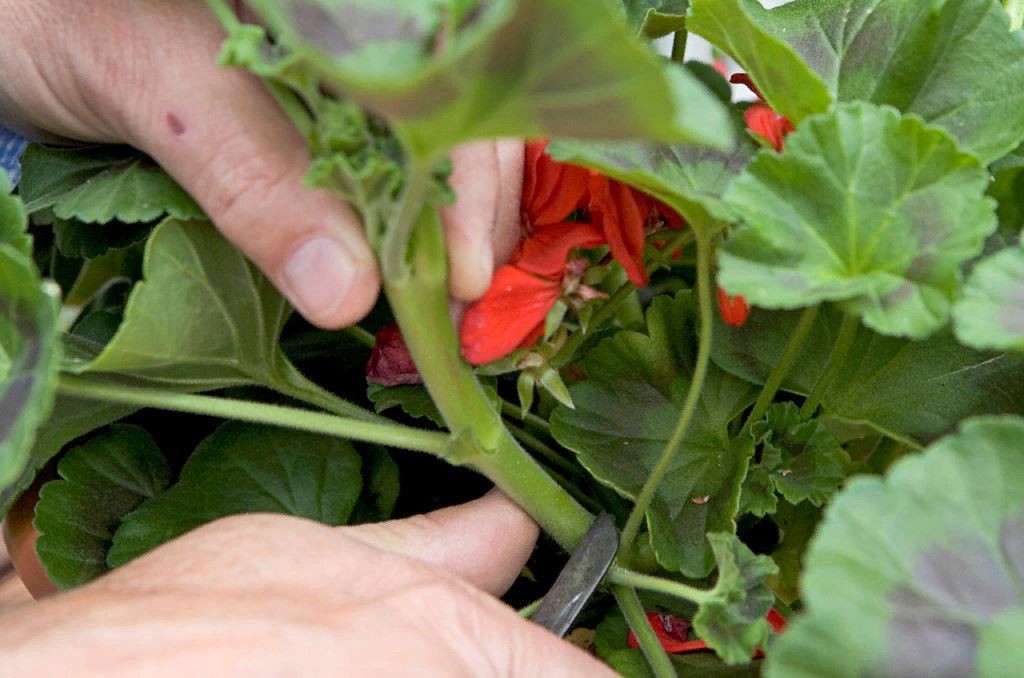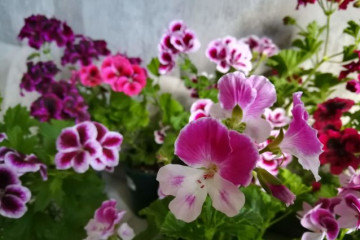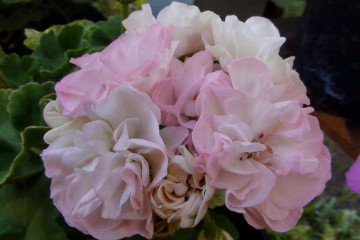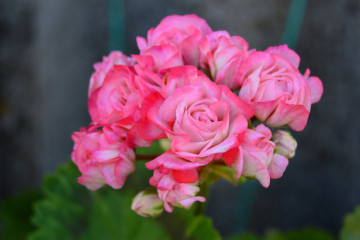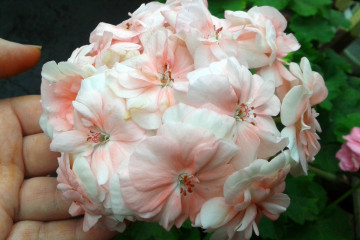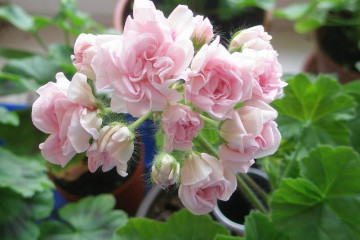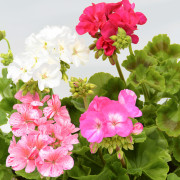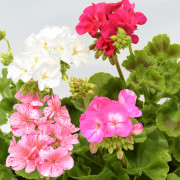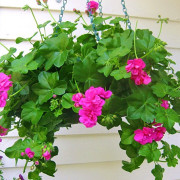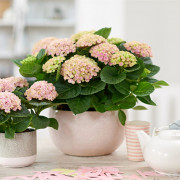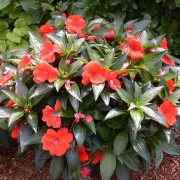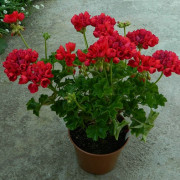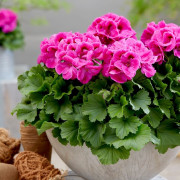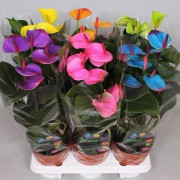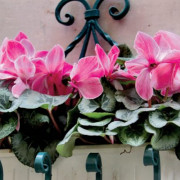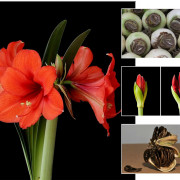Pelargonium Tuscany and its varieties Edwards, Bernd and others
Content:
Pelargonium was born in South Africa, and in Russia in the eighteenth century won the hearts of aristocrats and became an adornment of wealthy mansions. In the process of breeding, the plant has adapted to the peculiarities of the climate, and therefore is highly popular.
Appearance and features of pelargonium
There are about 250 varieties of Toscana pelargonium. The most favorite plants of flower growers are Bernd Pelargonium, Regina species, Tammo and others.
The stem of the flower can be straight or curly, and the leaves are carved and double. But the defining characteristic feature is the inflorescences themselves - bright or pale pink flowers of 4 petals, which are gathered together in a bouquet.
Description of the popular varieties of pelargonium of the Toscana series (Toscana)
Pelargonium Tuscany is especially popular. This is due to the fact that it can bloom all year round and is unpretentious in home and garden conditions. The lush bush not only decorates with delicate double umbrella-shaped inflorescences, but also exudes a pleasant spicy aroma. The most popular varieties:
- Pelargonium Toscana Bernd. Differs in large semi-double flowers up to 3.5 cm each and rich cherry color. It is similar to the Tammo variety. Pelargonium Tuscany Bernd can be planted indoors, on the balcony or in the garden.
- Pelargonium Edwards Tuscany. She also has tight inflorescences and a magnificent shape. Edwards Toscana's pelargonium flowers bear a resemblance to rosebuds.
- Tuscany Renske variety. It has compact bushes with double burgundy flowers. The flowering period is from early spring to late autumn.
- Toscana Castello. Named after the beautiful castle, it amazes with its grandeur. Widely branched, colors range from white and pale pink to purple.
- Toscana Hero. Gardeners call this the standard variety. Hiro's small stem is combined with rich flowering.
Planting and further care of ivy-leaved pelargonium Tuscany
Caring for pelargonium ivy-leaved Tuscany is easy. Planting technology may differ depending on the breeding location, since the culture grows well in the room, on the balcony and in the garden.
Planting a plant
The flower prefers a relatively hard soil that combines turf and leafy soil, peat and sand. It is important to take care of the looseness and oxygenation of the soil.
Watering, spraying and fertilizing
Before and after planting, the plant is watered abundantly for two weeks. Then, in hot weather, it can be watered every other day, and in cold weather - 2 times a week. It is better to install a drain under the pot to absorb excess moisture. Spraying the flower is necessary only on very hot days.
Pruning
The procedure is mandatory to achieve maximum flowering duration. There are three types of trimming:
- Home - it is done in early spring, you can safely cut off long stems and shape, since new ones grow very quickly.
- Autumn - removal of dry leaves and diseased stems.
- Pinching throughout the year.
Reproduction
Reproduction is done in three ways: by seeds, cuttings and dividing the bush.
Diseases and pests, ways to deal with them
Diseases of zonal pelargonium are manifested in yellowing, decay and dryness of the leaves. The most common causes are lack of light, too much watering, poor ventilation and insufficiently clean substrate.
Frequent plant pests are aphids and whiteflies. When they are found, the insects are first collected by hand, then the flower is treated with an insecticide solution.
Pelargonium Toskana, which is so often called geranium, is a real decoration of the house or garden. Lush bushes with dense flower umbrellas look luxurious and spectacular.
